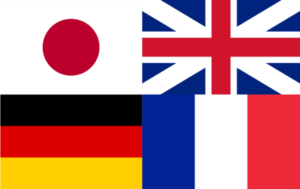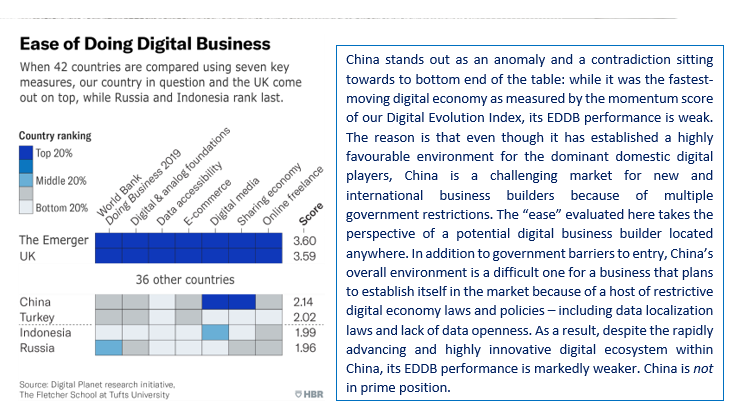Who is the largest, most successful emerging market? – Part 2
In part 1 we looked at demographics and gaining an appreciation for the next 4 drivers is crucial to understanding why we have this nation in pole position. We reveal who in Part III. You may recall from Part I that Insync views all markets now as emerging. A challenging thought for very good reasons! There is a profound shift occurring in how value is being created in industries and companies globally.
In part I we identified the 7 crucial drivers: these being.
- Demographic momentum across a variety of factors

- Knowledge and technology superiority
- Business ‘friendly’ regime
- Strong corporate governance
- Ability to adapt and transition
- Superior capital access
- Significant Megatrend exposures
In part 1 we looked at demographics and gaining an appreciation for the next 4 drivers is crucial to understanding why we have this nation in pole position. We reveal who in Part III. You may recall from Part I that Insync views all markets now as emerging. A challenging thought for very good reasons! There is a profound shift occurring in how value is being created in industries and companies globally.
It’s driven by the emergence of the Fourth Industrial Revolution. A century of how businesses operated and behaved financially is, as a consequence, also being altered. Some nations are better positioned for this than others. This creates a decoupling of ‘sameness’ across nations economically and thus how traditional measures of value apply. Not all changes will be ‘insync’, nor in sequence. Thus, great care needs to be exercised. To deny that this shift is underway however is to deny reality on the ground. Here are the next 4 of the 7 essential characteristics.
- Knowledge and technology-intensive [KTI] industry: 38% of its GDP emanates from KTI industries. You have to be a leader in KTI in the Fourth Industrial Revolution. This nation has the largest share of global research and development (R&D), generating the largest share of R&D-intensive industry output globally. It awards the largest number of Science &Engineering (S&E) doctoral degrees and accounts for significant shares of S&E research articles and citations globally.
S&E education and R&D investments lead to a highly skilled workforce and new S&E knowledge in the form of peer-reviewed articles, patents, and intangibles. Over time these investments also contribute to economic activity in the form of products, services and processes. Industries that intensely embody new knowledge and technological advances in their production (reflected by their R&D expenditures and utilization of S&E in the delivery of their services), account for nearly one-third (31%) of global economic output.
- Business Friendly: According to the World Bank, this nation possesses the most business-friendly regulatory regime compared to other major economies. This nation thrives on commerce and is at its centre of purpose.
Just as important (yet missing from the World Bank rankings) is the ease or difficulty of doing digital business. Harvard Business Review’s analysed the ease of doing digital business in 42 countries. These countries were selected as they constitute the most significant markets for digital businesses worldwide and offer a consistent set of data across a wide range of indicators.
The strongest performers are this nation and the UK. Their strengths encompass market sophistication, supply and accessibility of data, and institutional boosters for the digital economy.


- Adaptability: This nation has both cultural and legal traits embedded in its DNA that enable it to falter, fail, learn, renew or improve and then move forward. In most nations, failure has a high stigmatism attached both personally and in business. In this nation – not so much. People, communities’ even entire cities are regularly ‘allowed’ to fail in this nation. Failing fast and moving on clears the decks for future prosperity. This is essential for adaptability. Compare this cultural mindset of its people, industry and government to Japan for example. 30 years on and still its equity markets have not moved forward. This nation’s legal framework also supports its cultural mindset of adaptability.
- Corporate Governance and Capital Allocation: The “cash return” of this nation’s stocks, measured by dividends + buybacks as a percentage of market cap is the highest among major countries. The gap between buybacks in this country and Europe is huge with European buybacks at a tiny (5%) compared with the this one (25-30%).

Contrary to what most in the market believe; growth investment (capital expenditures, R&D, and cash M&A) has accounted for a larger share of cash spending than shareholder return (buybacks and dividends) every year since at least 1990 in this nation. (ref- Goldman Sachs). CapEx + R&D have also been remarkably stable. Indeed, for the past 30 years, corporate cash spending on CapEx + R&D initiatives have consistently equalled circa 8% of sales. During 2018, its top 450+ firms increased capital expenditure and R&D spending by 13% to $1.0 trillion, equal to 9% of annual sales (98th percentile since 1990). This is key to its out-performance of all other nations. Traditional measures are not accounting for this difference.
Part III we reveal ’who’ and explain how this translates into reality when investing with Insync and its peers globally.
For more information on other Megatrends, please visit Insync Funds Managers’ Website here.
EQT Responsible Entity Services Limited (“EQT”) (ABN 94 101 103 011), AFSL 223271, is the Responsible Entity for the Insync Global Quality Equity Fund and the Insync Global Capital Aware Fund. EQT is a subsidiary of EQT Holdings Limited (ABN 22 607 797 615), a publicly listed company on the Australian Securities Exchange (ASX: EQT). This information has been prepared by Insync Funds Management Pty Ltd (ABN 29 125 092 677, AFSL 322891) (“Insync”), to provide you with general information only. In preparing this information, we did not take into account the investment objectives, financial situation or particular needs of any particular person. It is not intended to take the place of professional advice and you should not take action on specific issues in reliance on this information. Neither Insync, EQT nor any of its related parties, their employees or directors, provide and warranty of accuracy or reliability in relation to such information or accepts any liability to any person who relies on it. Past performance should not be taken as an indicator of future performance. You should obtain a copy of the Product Disclosure Statement before making a decision about whether to invest in this product.
*The views and opinions expressed in this article are those of the author and do not necessarily reflect the views and opinions of Reach Markets.
Reach Markets Disclaimer
Reach Markets Pty Ltd (ABN 36 145 312 232) is a Corporate Authorised Representative of Reach Financial Group Pty Ltd (ABN 17 090 611 680) who holds Australian Financial Services Licence (AFSL) 333297. Please refer to our Financial Services Guide or you can request for a copy to be sent to you, by emailing [email protected].
This publication contains general securities advice. In preparing the advice, Reach Markets Australia has not taken into account the investment objectives, financial situation and particular needs of any particular person. Before making an investment decision on the basis of this advice, you need to consider, with or without the assistance of a securities adviser, whether the advice in this publication is appropriate in light of your particular investment needs, objectives and financial situation.
Reach Markets Australia and its associates within the meaning of the Corporations Act may hold securities in the companies referred to in this publication. Reach Markets Australia does, and seeks to do, business with companies that are the subject of its research reports. Reach Markets Australia believes that the advice and information herein is accurate and reliable, but no warranties of accuracy, reliability or completeness are given (except insofar as liability under any statute cannot be excluded). No responsibility for any errors or omissions or any negligence is accepted by Reach Markets Australia or any of its directors, employees or agents. This publication must not be distributed to retail investors outside of Australia.
It is recommended that you seek independent advice and read the relevant Product Disclosure Statement before making a decision in relation to any investment. Any advice contained in this communication is general and has not taken into account the investment objectives, financial situation and particular needs of any particular person.
General Advice Warning
Any advice provided by Reach Markets including on its website and by its representatives is general advice only and does not consider your objectives, financial situation or needs, and you should consider whether it's appropriate for you. This might mean that you need to seek personal advice from a representative authorised to provide personal advice. If you are thinking about acquiring a financial product, you should consider our Financial Services Guide (FSG) including the Privacy Statement and any relevant Product Disclosure Statement or Prospectus (if one is available) to understand the features, risks and returns associated with the investment.
Please click here to read our full warning.
